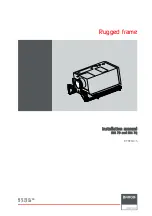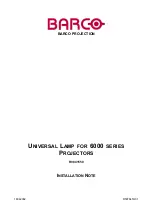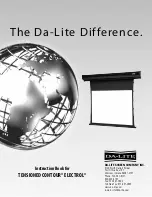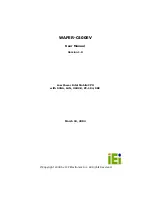
83
Appendix A: Performance Specifications
Omnia ONE
FM
As of June 2008 –
Version 2.0 FM Software
Note: Discrete I/O measurements have been made in "Bypass" mode (available in the
Input/Output menu). FM composite measurements have been made using the "Proof_Perf"
preset.
General Audio Specifications
Frequency Response:
Complies with the standard 50 or 75 microsecond pre-emphasis curve
within ± 0.50 dB, 30 Hz to 15 kHz. The analog left/right outputs
and
AES/EBU Digital outputs can be configured for flat or pre
-emphasized
output.
System Distortion:
Less than 0.01% THD, 20 Hz
–
7.5 kHz. Second harmonic distortion
above 7.5 kHz is not audible in the FM system.
*Signal-Noise Ratio:
> -80 dB de-
emphasized, 20 Hz
–-
15 kHz bandwidth, referenced to
100% modulation).
*The measured noise floor will depend upon the settings of the Input and Output Gain controls and is primarily governed
by dynamic range of the Crystal Semiconductor CS5361 A/D Converter which is specified as >110 dB. The dynamic range
of the internal digital signal processing chain is >144 dB.
Stereo Separation:
Greater than 65 dB, 20 Hz
–-
15 kHz; 70 dB typical..
Crosstalk:
> -
70 dB, 20 Hz
--
15 kHz.
Composite Outputs:
Source Impedance: 5 ohms or 75 ohms, jumper-selectable. Single-ended
and floating over chassis ground.
Output Level: 0V to 10V in 0.05V steps, software adjustable.
D/A Conversion: Texas Instruments/Burr Brown PCM1798, 24
-bit sigma-
delta converter.
Configuration: Two electrically independent outputs. Software based
level adjustment.
Load Impedance: 50 ohms or greater load is suggested.
Pilot Level: Adjustable from 4.0% to 12.0% in 0.1% steps and OFF.
Pilot Stability: 19 kHz, ± 0.5 Hz.
Signal-to-Noise Ratio: -
85 dB typical, 75 μS de
-
emphasized, 15 kHz
bandwidth, referenced to 100% modulation).
Distortion: < 0.02% THD 20 Hz
–
15 kHz bandwidth, 75 μS de
-
emphasized, referenced to 100% mo
dulation.
Stereo Separation: > 65 dB, 30 Hz
–
15 kHz.
















































